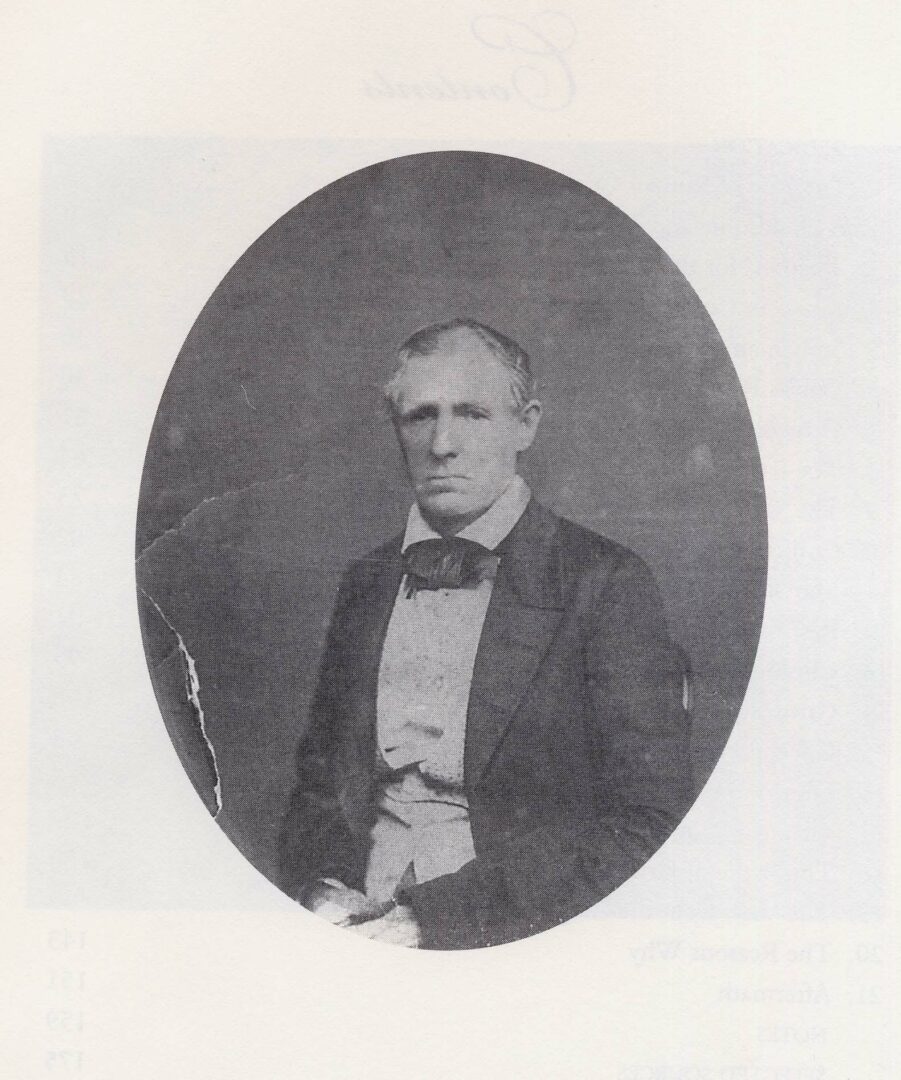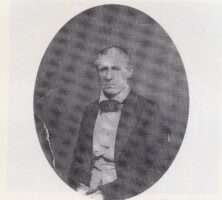Griswoldville, an industrial village on the Central of Georgia Railway in Jones County, produced cotton gins during the antebellum period and Confederate revolvers during the Civil War (1861-65). The village was destroyed during Union general William T. Sherman’s march to the sea, and the only major infantry battle of that campaign was fought near its ruins.

Samuel Griswold, the village’s founder, moved from Connecticut to Jones County after the War of 1812 (1812-15). Settling in Clinton, the county seat, he made a small start in the tinware trade before progressing to the much more lucrative business of producing cotton gins. His Clinton factory complex soon expanded to include smithies, foundries, and shops for producing farm implements and carriages. By the 1830s Griswold was one of the South’s leading gin manufacturers, and his early partner, Daniel Pratt, opened a gin-making concern in Prattville, Alabama, an industrial village he named for himself.
By 1850 Griswold had moved his gin business to extensive acreage he had purchased in lower Jones County on the Central railroad. As had his once and future partner Pratt, Griswold named his factory village for himself: Griswoldville. His complex included not only a steam-powered gin factory, with a lofty brick chimney, but also a gristmill, blacksmith and pattern shops, a soap and tallow factory, and a foundry. Griswold’s home stood below the tracks, and numerous other houses for family, partners, and operatives dotted the settlement. Griswold’s dwellings for ensalved people lay along a stream at the village’s southern edge. A nondenominational church welcomed the white residents and visitors from throughout the county. All were welcome at the well-stocked village store.
As the last station before Macon on the railroad from Savannah, Griswoldville boasted a depot, water tank, wood pile, and generous length of rail siding. Travelers were impressed by Griswold’s creation. One lady pronounced Griswoldville the “prettiest town” on the Central, while a newspaper reporter described it as “a handsome and thrifty little village, lying in ambush among tall graceful pines.”
Soon after the Civil War began, Griswold decided to adapt his factory to produce weaponry. First, he answered the call of Georgia governor Joseph E. Brown for manufacturers to produce pikes: pole arms of medieval appearance, steel-tipped wooden shafts considered useful anti-cavalry weapons. Then, by the spring of 1862, Griswold teamed with former employee A. N. Gunnison to manufacture firearms for the Confederacy styled after the Colt Navy revolver. Gunnison had experience in producing these sidearms; Griswold had the facilities and the workforce, made up almost entirely of trained enslaved mechanics who were given regular wages. Ultimately, nearly 3,700 Griswold and Gunnison revolvers would be produced, a number unsurpassed by any other firm in the Confederacy.
The pistol works were threatened by the Stoneman Raid in July 1864 but escaped with little damage. But on November 20, during the March to the Sea, the factory complex, along with much of the rest of Griswoldville, was burned by Captain Frederick S. Ladd of the Ninth Michigan Volunteer Cavalry and “one hundred picked men.”
On November 22 a Confederate force, made up mainly of Georgia militia “on loan,” attacked elements of Sherman’s right wing at Duncan’s Farm east of Griswoldville. The Confederate force was marching along the line of the Central railroad to meet a train sent to carry them to Augusta, thought to be Sherman’s destination. The Union troops dug in along a ridge astride one of the approaches to their ordnance trains, which were heading toward Gordon but slowed by muddy roads. In a tragedy of errors, the Union infantry was waiting for a Confederate cavalry attack that never came, while the Georgia infantry charged at them across an open field, thinking they were a small force of cavalry.
The Battle of Griswoldville lasted from mid-afternoon to dusk, with some 2,300 Confederates suffering about 650 casualties, a great number of them officers. Many of the wounded and dead were young boys and old men from the Georgia militia, leading one Union officer to remark, “I hope we will never have to shoot at such men again.” The 1,500 Union troops lost about 62 men, but among the badly wounded was their commander, Brigadier General Charles C. Walcutt, who was carried from the field before battle’s end.
Old and ailing, Griswold did not rebuild, though Griswoldville’s crossroads location on a rail line would attract a population of around eighty by 1900, and the place would later be the site of a district school. By the mid-1950s the area had been bought by a Kraft conglomerate, and the site was once again given over to pine forests. The battlefield, however, is maintained as a Georgia state historic site.






